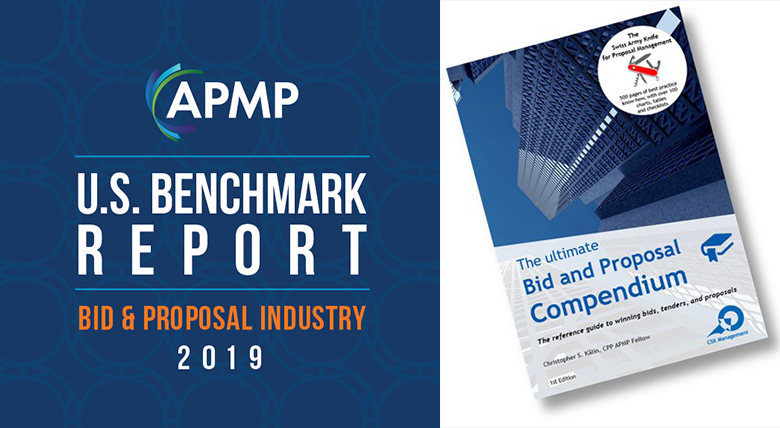Armed with best practices, proposal essentials, and the desire to pass on what wisdom I, Betsy Blakney, gained in my 20-plus years as a proposal professional, I accepted the invitation to mentor another colleague, Jeaneen Searles.
Much like business development, a mentoring relationship has a life cycle: connection, learning, engagement, and dissolution. The initial connection in our mentoring relationship was a simple conversation about attending the 2019 APMP Bid and Proposal Con (BPC) in Orlando, Florida. Despite busy proposal, color review, and training schedules, we both attended and walked away with a fresh perspective, renewed energy, and a greater network to dip into from time to time for support and guidance.
Prior to attending BPC, we entered into a formal agreement provided by our company and held our first meeting. We discussed the project we had planned: analyzing some corporate proposal best practices and how they aligned to the latest published research and know-how. A month later, we met to plan our attack. We decided to use the SOAR methodology by describing the situation or challenge, stating the objectives or our intention, detailing the actions we took, and analyzing and applying the results.
Situation: Compare the BidMaster Framework™ in Christopher Kalin’s The Ultimate Bid and Proposal Compendium and the 2019 APMP U.S. Industry Benchmark Report findings to our corporate business development (BD) life cycle, specifically targeting technology and document resources.
Objectives: (1) Examine the utility of the sample documents (Appendix D) and checklists (Appendix E) in Kalin’s reference guide; and (2) determine if our findings aligned with the APMP findings regarding proposal-writing resources—availability, usefulness, and degree of management.
Actions: We set aside an hour and a half to do the comparison and to identify the gaps or differences. We mapped our corporate checklists to the compendium and reviewed the sample documents to see if there were any similar documents (e.g., proposal templates) in our BD content libraries—or ones we might benefit from in the future if we didn’t have them in our current BD life cycle.
Results: We found the compendium to be well-structured and easy to use. The BidMaster Framework™ aligned well with our corporate BD process from front to back. From initial bid preparations to lessons learned, the basic components or work packages tracked step by step, identifying core activities and supporting documentation with “The Right Tools.”
Most APMP members have access to tools that are actively maintained; most have access to prepared document tools.
We studied Kalin’s sample documents with interest. Trying to get our arms around the differences in nomenclature was the biggest hurdle. Other differences were minor and manifested themselves in the nuances between commercial bids and U.S. federal government procurements.
Up next was an examination of the Appendix E checklists. Several checklists are detailed in our capture plan template. The remaining checklists are included in our proposal manager’s toolkit. The five items listed on the presubmission checklist are conducted by members of our proposal team, but they are not actually checked off via this mechanism. We take these steps during our “white glove” exercise and follow the instructions on our production checklist.
The fifth finding in the APMP report indicated that “Access to resources for proposal development is strong, yet many of these tools are not user-ready and require many revisions or are not actively maintained.” Most APMP members have access to tools (e.g., proposal templates; content libraries; customer relationship management, or CRM, systems) that are actively maintained; most have access to prepared document tools (e.g., past performance references, capability statements). However, many of the document resources need to be tailored each time another proposal is written. Biggest takeaway from the Benchmark Report: 51% of respondents didn’t have access to scheduling software.
As frequent users, we felt that most of our company’s technology tools are readily available and well-maintained. Our proposal templates are standardized, and all members of the proposal operations team have access to our BD portal and its content libraries. Much like the APMP report findings, graphic services and CRM systems are also accessible and actively managed. To combat the mixed results about document resources (e.g., references, capability statements, resume templates, case studies) needing constant revision, we refresh those documents regularly. Our knowledge management team ensures that content is updated and that users know where to find the latest content.
Advice
By creating a culture of shared values and norms, we proposal professionals can enlist the cooperation of line organizations to provide periodic updates to project information. We can also convene working groups to review tools that users believe require updating and make recommendations for improvement. Periodically, we should collaborate with other corporate organizations to produce processes and enablers that are more efficient and effective than those that currently exist. As practices change, we need to modify resources to keep pace.
Our next project in the mentoring life cycle is to examine the compendium’s best practices against the 18 business practices tested in the APMP Benchmark Report. Kalin’s reference guide has lots of hands-on examples, so tweaking our ever-evolving proposal development processes to remain competitive may be our next goal—and it should probably be yours.
Betsy Blakney, CPP APMP, APMP Fellow, is director of proposal operations support at CACI Inc. Jeaneen Searles, who assisted with this article and its accompanying research, is manager of proposal coordinators at CACI International. They can be reached at bblakney@caci.com and jeaneen.searles@caci.com, respectively.



Join the Conversation